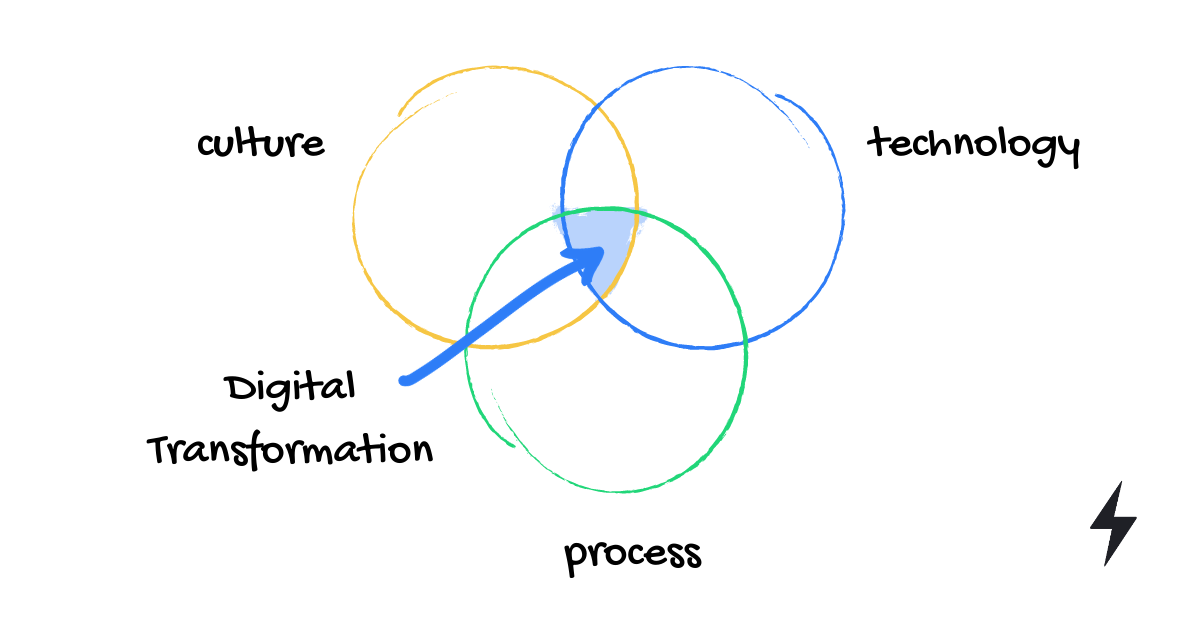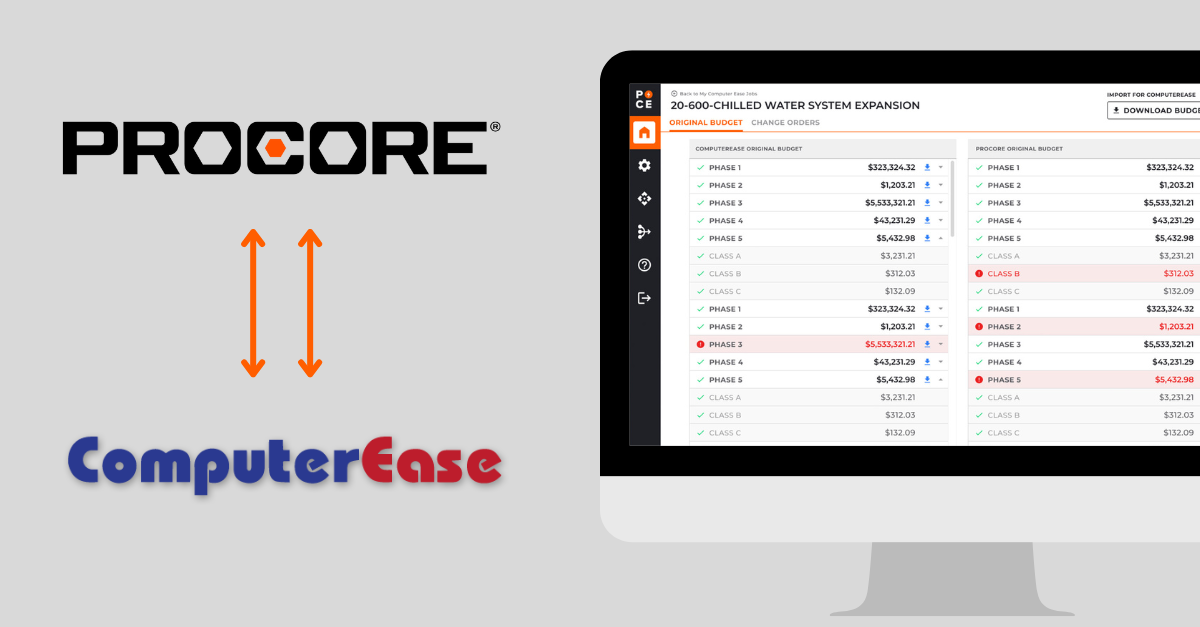The phrase “digital transformation” gets thrown around a lot these days, but many of us don’t really know what it means. In fact, only about 30% of employees felt that they’d be comfortable explaining what a digital transformation is.
But going forward, all businesses need to understand what digital transformation is and why it’s important for the future.
Keep reading to learn how to define digital transformation and how businesses of any size can execute a digitization strategy successfully.
Defining Digital Transformation
Digital transformation is the process of using digital technologies to create new (or change existing) business processes, culture, and customer experiences to meet today’s market demands.
Sounds straightforward right? But, the definition itself can be oversimplified. You also need to understand what a digital transformation is NOT.
It’s not just digitization – or the conversion of analog to digital like converting paper and spreadsheets to digital records. It’s also not just adopting a few digital tools to update some existing business processes.
While both of these are part of the process, it isn’t quite that simple.
Digital Transformation = A New Mindset
Digital transformation involves stepping back and asking how you can take advantage of emerging digital technology, data, and processes to fundamentally change how you provide for customers and therefore, run your business.
And, it’s as much a cultural or mindset shift as a change in processes. From leadership down, everyone should be asking, “how can we use today’s available technologies to create an amazing experience?”
In other words, a digital transformation is reimagining your business in the digital age.
Digital transformation is a journey (that doesn’t really end). You’ll always be looking for how to integrate digital tools, processes, and data into all areas of your business so you can improve operations and deliver more value to your customers.
Read stories about successful business tools launched with SPARK →
Why Digital Transformations Matter
Digital transformation is about keeping up, whether it’s with the latest market demands, your customers, employees, or competitors. Let’s see how.
1. Elevate Customer Experiences
Today’s customers are in control. They pick who they do business with and when. And what drives their behavior? Their experience with your brand.
84% of consumers value the experience they have with a business as much as their products and services.
Once customers have one good experience, the bar is set for everyone else they interact with. They expect the same intuitive, personal, and convenient interaction.
Think about how the Amazon experience has changed consumers. Amazon helped pioneer the culture of “instant gratification” that includes easy online shopping and 1-day delivery. And those expectations are now set for all online retailers.
2. Keep up with the Competition
What happens if you can’t deliver these types of experiences? Well, customers will probably go elsewhere to your competitors who do.
The good news? If your industry is slow to adopt new technology, you can gain a notable advantage by leading the way with better, digitized experiences.
3. Improve Employee Experience
Internally, digital transformation is also a proven way to increase employee morale and loyalty.
Employee expectations are shaped by the use of technology in their personal lives, especially younger generations like millennials and GenZ.
They want to use the latest and greatest in their jobs too. They don’t want to use clunky and outdated tech because it’s frustrating and slow.
Creating a culture based on innovation and tech can help attract and keep top talent, while delivering the best possible experience for your customers.
How COVID-19 Accelerated Digital Transformations
Digital transformation isn’t a new concept. Experts have been talking about digitizing processes and data as early as the 1990s and mid-2000s.
But, COVID-19 was a wake up call for many leaders. All of sudden most businesses were forced to radically change the way they worked. Manual processes that relied on in-person interaction weren’t “just good enough” anymore. It wasn’t even an option.
Of course, some businesses were more prepared for this radical change than others. For example, some companies struggled more than others with switching to remote workforces.
But for many companies, COVID-19 was a catalyst for changes that were already underway.
85% of CEOs found that their digital transformations accelerated during the pandemic. They’re looking to leverage technology even more to drive efficiencies and growth.
Moving to the Cloud
For those with digital transformation underway, their first move was upgrading IT infrastructures to the cloud. This was especially important for supporting remote and hybrid work models.
With cloud computing, employees have access to the resources they need, wherever they are. It also gives IT leaders peace of mind when it comes to data security and utilizing personal devices for work.
Still learning about the “cloud?” Watch this quick video from our IT partner GRIT Technologies. In less than 3 minutes, it covers how cloud computing different from traditional IT.
Cloud computing also allows you to easily scale your IT resources when you need to, like deploying a new innovative digital tool.
Read more about modernizing your IT infrastructure as part of your digitization strategy.
How to Plan Your Digital Transformation Strategy
But the reality is that not all digital transformations will be successful.
70% of all digital transformations don’t meet their goals.
That number is sobering. And while you shouldn’t fear changing “how you do business,” know that it isn’t easy either.
It’s a fundamental shift in your cultural, technology, data, and processes. It will require a strategic plan and execution, along with some patience.
To be successful, keep these best practices in mind while preparing for a digital transformation.
1. Let Your Business Strategy Guide Your Decisions
Your overall business strategy should guide your efforts and changes. You want to seek and solve the main challenges that you face– most likely relating back to your operations and customer experience.
Digital transformation is more than acquiring some nifty new tech tool that you read about. Rather, it’s about choosing the right digital tools that can move your business forward today– and tomorrow.
2. Leverage Your Own Team’s Knowledge
Be sure to leverage the insights and business knowledge of your internal stakeholders. These people know the operations of your business best.
Read more about how to gather and prioritize input from key stakeholders for a new software project.
Too many strategies fail because they rely solely on outside consultants or partners trying to import “best practices.” But these consultants alone can’t fully realize the inner workings of your business.
3. Choose the Right Partners that Know the “Why” of Your Business
It’s critical to choose the right partners to guide and support your projects. They need to care about and deeply understand the “why” of your business and your new vision.
That’s how we like to operate at SPARK. While we offer our own expertise and experience for digital transformations, we intentionally spend a lot of time on the ground with our clients.
We need to know your business inside and out so we can deliver the exact solutions that your business needs to thrive and grow.
Read more about how to choose the right technology partner for your project.
Getting Started
As you plan for adopting new technologies, it can be helpful to discuss your ideas with a partner. They can help you understand what’s possible and build a roadmap to achieve your vision.
At SPARK, we love meeting and hearing new ideas. Contact us today to see how we can help!






